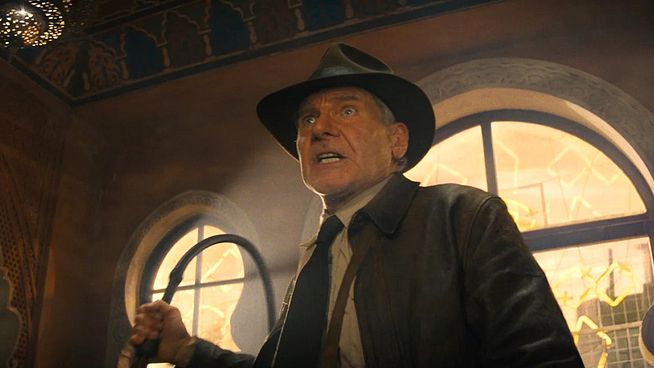
Mysterious artifacts, exotic locations and Nazi adversaries: this is how you could summarize the typical ingredients of an Indiana Jones film – strongly abbreviated, of course. “Indiana Jones and the Wheel of Destiny,” for which Harrison Ford steps into the iconic adventurer outfit for the fifth and probably last time, directed by James Mangold, largely relies on the tried and true recipe.
But that wasn’t always the case: after “Raiders of the Lost Ark” (1981), the first adventure about the archaeologist with hat and whip, it became a worldwide blockbuster phenomenon, there were plenty of ideas and suggestions for potential sequels – some of which had little to do with the franchise as we know it today.
Indy would travel to Scotland
The late fourth film, Indiana Jones and the Kingdom of the Crystal Skull (2008), tested all of many fans’ patience with aliens, CGI meerkats, and a cartoonish nuclear-testing action sequence – though it was released after the more popular third part (Indiana Jones and the Last Crusade”, 1989) marked a return to the pulp roots of the series and, in the opinion of the author of these lines, also has great qualities as a classic Indy adventure. So what would fans have said to the idea of not having Indiana Jones search for lost artifacts – but making him a ghost hunter in Scotland?
“Indiana Jones” as a horror movie – that sounds appealing at first. And it’s not as far-fetched as it first reads: After all, the first part already came up with melted faces. And probably never in his career has Steven Spielberg been closer to the horror genre than in the sequel “Indiana Jones and the Temple of Doom” (1984): In the underground hideout of a religious cult that sacrifices people and enslaves children, later “Jurassic Park” director true footage of hell – among other things, a man’s heart is ripped out while he is still alive.
That’s why Steven Spielberg had had enough of ghosts
Still, Spielberg wasn’t thrilled when, after the resounding success of Part 1, producer George Lucas came up with the idea of setting the sequel in a haunted Scottish castle.
In 1982 Spielberg not only directed the masterpiece ET, but also produced Tobe Hooper’s haunted house classic Poltergeist. In addition, according to many crew members, the star director also acted as a so-called ghost director for large parts of the film – which would explain why “Poltergeist” feels more like a Spielberg movie than a work by “The Texas Chainsaw Massacre” creator. After this experience, Spielberg had had enough of ghost stories.
Spielberg’s suggestion that the second part be moved to India eventually led to the final version of Indiana Jones and the Temple of Doom. Incidentally, the ghost idea was not completely off the table: “Gremlins” author Chris Columbus resumed the thread of the haunted castle in his draft screenplay for a possible third part – but this film was never realized either.
Author: Michael Bendix
Source : Film Starts
I am Dawid Malan, a news reporter for 24 Instant News. I specialize in celebrity and entertainment news, writing stories that capture the attention of readers from all walks of life. My work has been featured in some of the world’s leading publications and I am passionate about delivering quality content to my readers.







